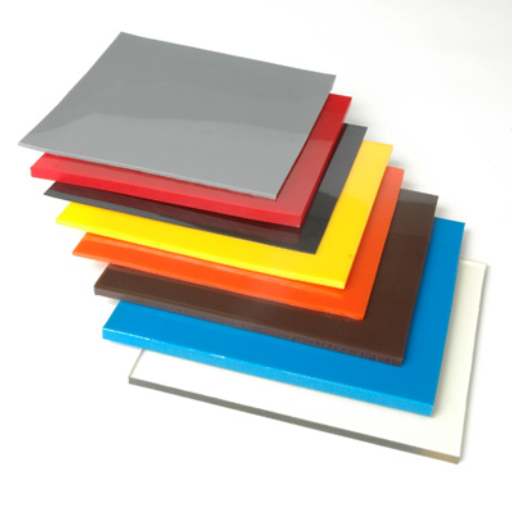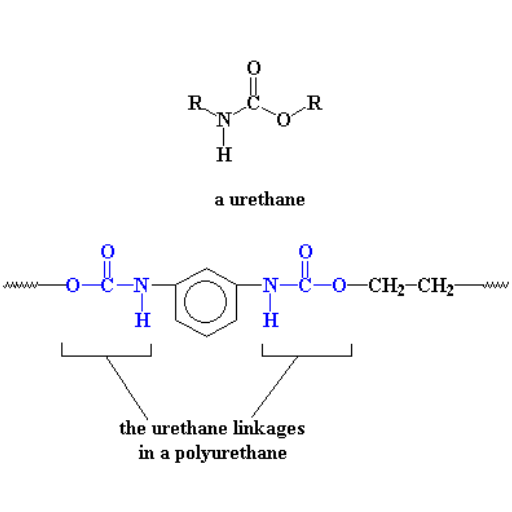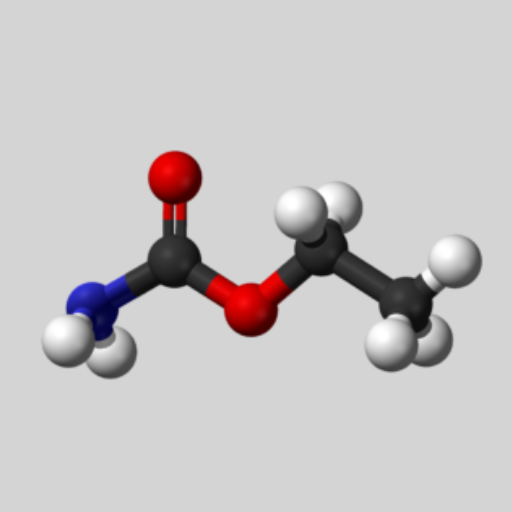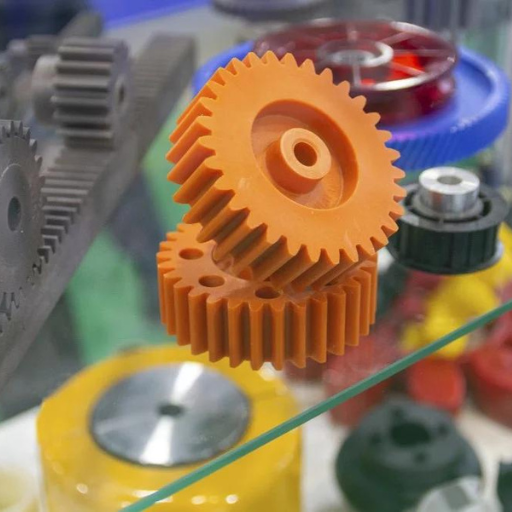Urethane, often referred to as polyurethane, is a versatile chemical compound with a wide range of applications. This article aims to provide a comprehensive overview of urethane, delving into its various uses, distinguishing it from other similar compounds, and examining its practical applications in different industries. By understanding the unique properties and benefits of urethane, readers will gain a clearer perspective on why it is such a valuable material. Whether you are a professional in the field or simply curious about this multifaceted compound, this guide will offer valuable insights into the world of urethane.
What is Urethane?
Definition and Chemical Structure
Urethane, commonly known as polyurethane, is a polymer with organic units joined by carbamate links. The chemical structure of this compound is made up of repeating urethane groups (-NH-CO-O-) which are formed by a reaction between a diisocyanate and a polyol. This distinct structure has allowed it to exist in diverse forms such as flexible foams, rigid plastics, and elastomers. Urethane can therefore be described as a highly adaptable material that possess multiple properties for use in variety of industries.
Common Uses of Urethane
Its versatility makes it possible to use urethane in various industries due to its unique qualities. Below are some examples:
- Construction Materials: It is commonly used in construction industry because of its good resilience and thermal resistance rating. For instance, the thermal conductivity coefficient of rigid polyurethane foam is about 0.022 W/m·K which makes it an efficient insulator that can be used on walls or roofs.
- Automotive Industry: In developing seat cushions, gaskets and interior panels for cars the automotive sector usually utilizes polyether based urethanes since they have had high flexibility and cushioning effect so far besides being strongly resistant against impact force application and compression set performance . Their Shore hardness range from A20 to D80 hence appropriate for both soft seats or more firm structural components.
- Textile & Clothing Material: Examples of uses include stretchy spandex fiber manufacture where exceptional stretching capabilities are required; these types of fibers normally expand by approximately 500-600% longer than their original size thus affording relaxed feel when worn especially during sporting times.
- Medical Devices And Equipment: Its biocompatibility coupled with toughness make it ideal for medical devices such as catheters, wound dressings and various medical tubing materials. These coatings may have hardnesses ranging from Shore A 70 to Shore D 75 depending on the required strength versus flexibility.
- Marine and Offshore: Urethanes are resistant to corrosion, abrasion and marine growth making them ideal protective coatings for ships, underwater pipelines and buoys used in marine environments. Most polyurethane coatings have a breaking elongation of 100-200% meaning that they adhere strongly over time.
- Consumer Goods: This adaptability is particularly relevant to consumer goods like furniture, flooring or electronics where it can be molded into different shapes/forms. For instance, the viscosity of urethane varnishes utilized on wooden furniture typically fall between 100-250 mPa s, thus ensuring an even surface that also provides protection against wear and tear.
All these applications indicate how versatile urethane is as a material and the technological conditions under which it finds its application.
Urethane vs. Polyurethane
These terms are often interchanged but they refer to separate chemicals as well as materials. Urethane is one organic compound technically called ethyl carbamate while polyurethane constitutes several urethanes connected with each other through carbamate (urethane) links forming polymers. Polyurethanes may exist in different manifestations such as foams, elastomers or coatings each having particular properties needed for various uses.
Polyols react with di-isocyanates in the production of polyurethanes resulting into very flexible products whose hardness can be adjusted depending on the need for strong hard materials. This makes them suitable for use across various industries such as automotive and consumer goods among others due to their durability and adaptability qualities. But pure form of urethane itself has limited applications unlike wide scope of use enjoyed by polyurethanes in practice.
Polyurethane is not the same as urethane, but rather a collective name for several materials with many different mechanical and chemical properties which are very useful in various industrial sectors.
How is Urethane Used in Different Industries?
Urethane for Automotive Sector
Urethane is crucial in the automotive industry where it contributes to various car parts and systems. One major use of urethane is in manufacturing high-performance tires. Urethane compounds are known to have great wear resistance as well as strength which enhance the grip and durability of tires on diverse surfaces. In addition, urethane is widely applied in making automobile paints or coatings. Such coatings protect vehicles from corrosion, UV light and other common factors like wearing out that makes them more pleasing aesthetically and structurally durable.
In fact, another prominent utilization of urethane within the automotive domain lies on seating foam development for cars. The product’s softness and cushioning properties make it ideal for automotive seats thus enhancing passenger comfort without compromising their support or longevity. Similarly, the material also serves a purpose in sound insulation hence leading to quieter driving conditions. To put it into perspective, urethane can be used in a broad range of automobile applications such as improving vehicle performance and durability; ensuring passengers feel comfortable as well as secure.
Urethane’s Functions in Construction Engineering
Their unmatched adaptability and durability make urethanes important construction and engineering materials. For instance, one area of application has been in insulating materials production. For example, polyurethane foam acts excellently when used for thermal insulation purposes especially on walls, roofs or floors in residential buildings among others because it is highly efficient at reducing energy losses.
Additionally, urethanes are used to manufacture high-performance sealants or adhesives that bond fasteners together flexibly even under different environmental temperatures without tearing apart easily . These attributes are very important during building projects where durability plays a central role.
Still further, most construction materials undergo treatment by application with polyurethanes mainly as coatings or paints to prevent them from corroding when exposed to weather elements including moisture among others within marine structures such as waterways where saltwater may be of concern . These coatings ensure that structures and components live longer lives since they remain in top shape for more extended periods.
In general, the versatile characteristics of urethane make it an indispensable construction and engineering material that enhances insulation, durability, and structure in numerous applications.
Urethane for Consumer Goods
The production of a variety of consumer goods is greatly influenced by urethane, since it possesses qualities such as flexibility, strength and resilience. The most common use of urethane in consumer goods is for manufacturing different types of flexible foam products like mattresses, pillows or padded furniture. Urethane foam imparts good feel, support and lifespan when used under these conditions.
Besides this, polyurethanes are commonly used in making footwear. The material finds its application in shoe soles where it has great shock absorption properties meaning less fatigue on wearers’ feet because they will experience plenty of bouncing back after impact with hard surfaces unlike other materials available today.
Moreover, urethanes may also form protective films on appliances or electronics so as to maintain their aesthetic appearance besides keeping them free from scratches that may result from using them over time. This ensures that these devices have longer life spans while maintaining their original look .
Sports equipment like skateboard wheels have rollerblades and even golf balls are made of urethane as well . These items need a strong material which can withstand impacts without getting deformed hence the use for polyurethanes which have high resilience properties as well as being abrasion resistant since the users exert extreme forces on them .
Overall, urethane’s versatility coupled with its tough nature makes it a vital ingredient in the manufacturing process of diverse consumer goods thus enhancing product performance, comfortability and longevity.
What Are the Main Differences Between Urethane and Polyurethane?
Chemical and Structural Differences
Confusing urethane with polyurethane is common because they sound similar and have similar properties, but they are chemically and structurally different. Urethane, otherwise called ethyl carbamate, exists as a particular chemical compound having the formula C_3H_7NO_2. This is the major compound or basic unit for production of other chemicals or products.
Polyurethane, however, is a polymer consisting of repeating units derived from urethane monomers. It results from reaction between a diisocyanate or polymeric isocyanate and polyol (a molecule containing many hydroxyl groups) in presence of appropriate catalysts. Thus obtained material can be adjusted to requested hardness, flexibility, density terms therefore very versatile.
Therefore, urethane has only one molecule whereas polyurethanes are made up of long chains of linked urethane molecules thereby forming networks of interconnected molecules. This polymerization gives unique mechanical behaviors to polyurethanes e.g., elasticity, strength as well as resistance to abrasion and chemicals that surpass those observed in their single-molecule counterparts.
Performance and Durability
The varied structural compositions of urethane versus polyurethane lead to diverse capabilities in practical applications when comparing their performance and durability aspects. The key technical parameters are:
- Elasticity: Its structure being polymeric allows it back to its original shape after deformation making it more elastic than urethane. For instance, foam cushions or elastic fibers require something like polyurethanes which can bend without breaking.
- Hardness: During synthesis by controlling the proportion between diisocyanate and poliol one may tune hardness of various types of PU PolyUrethanes allowing them to be applied over wide soft-flexible materials for example foams down to rigid impact resistant ones.
- Abrasion Resistance: Consequently, this feature makes polyurethanes suitable for high wearing applications including wheels, seals and gaskets. As a result, Polyurethanes products have longer life spans and require less maintenance.
- Chemical Resistance: The chemical resistance of both urethane and polyurethane is good but the networked structure of the latter makes it more resistant to oils, solvents and environmental deteriorations.
- Temperature Stability: PU remains stable over a larger temperature range unlike urethane. Typically, polyurethanes can operate effectively within a temperature range of -40°C to 82°C (-40°F to 180°F), while specific formulations may offer even broader ranges.
- Load-Bearing Capacity: Due to how stress is distributed along its polymer chain network, polyurethane outperforms in term of load-bearing capability. Consequently, it is desirable for applications that involve heavy loads as well as dynamic stresses.
Looking at these parameters demonstrates why polyurethane is preferred for tough and versatile applications where durability, flexibility or long lifetimes are required.
Applications and Uses
Polyurethane has unique properties which make it ideal for many different applications across various industries. Here are some key applications and their corresponding technical parameters:
Automotive Industry:
- Seats and Cushions: Polyurethane foam offers comfort as well as durability.
- Technical Parameters: Excellent flexibility, load-bearing capacity, and temperature stability.
- Coatings and Sealants: It protects against corrosion plus wear.
- Technical Parameters: High abrasion resistance, chemical resistance, and durability.
Construction:
- Insulation Panels: Used for thermal insulation because of its low thermal conductivity
- Technical Parameters: Temperature stability and chemical resistance.
- Sealants and Adhesives: Has strong bonding capabilities coupled with flexibility
- Technical Parameters: Adjustable hardness and chemical resistance.
Footwear:
- Soles and Midsoles: Polyurethane is better at providing comfort and wearing away than others.
- Technical Parameters: Abrasion, flexibility, load carrying abilities.
Electronics:
- Potting and Encapsulation: Preserves susceptible parts from environmental damages.
- Technical Parameters: Chemical resistivity and temperature resistance.
Industrial Machinery:
- Wheels and Rollers: Having a bearing capacity of polyurethane material makes it suitable for high-stress engagements.
- Technical Parameters: This is in terms of its wear resistance being excellent, supporting loads, as well as becoming flexible.
Medical Devices:
- Catheters and Tubing: Combines flexibility with ability to last long.
- Technical Parameters: Flexibility, chemical resistance, adjustable hardness
Looking into these applications with regards to the technical parameters that validate their application help understands why polyurethane has become a preferred material for many demanding applications which require longevity in performance durability as well as versatility.
Why is Urethane the Best Choice for Certain Applications?
Urethane Coatings and Affordability
For a wide range of applications, urethane coatings are praised for their adaptability and high level of protection. Here are the key benefits:
Durability: Urethane coatings are resistant to wear and tear therefore ideal for heavy traffic areas as well as industrial settings.
- Technical Parameters: High tensile strength, elongation at break, and tear resistance.
Chemical Resistance: Such substances can be corrosive in nature but urethane coatings can resist them since they have chemicals that cannot easily react with hydrocarbons, acids or alkalis.
- Technical Parameters: Chemical spot resistance tests as spelled out by ASTM D1308.
UV Stability: Urethane coatings have good UV stability that helps block degradation over time which is essential for outside use.
- Technical Parameters: Measured UV resistance according to ASTM G154 standards.
Flexibility: These materials don’t crack even when temperature fluctuations are high thus lasting longer than others products on the market today.
- Technical Parameters: Testing flexibility following ASTM D522 guidelines.
Adhesion: The bond between the coating film and substrate metals like steel, aluminum; concrete; wood etc. should be strong enough to withstand applied forces without peeling or cracking off under normal working conditions in these industries because it has many purposes such as manufacturing of various items such as automobile parts (Bonanno et al., 2016).
- Technical Parameters: Adhesion strength measured by using ASTM D3359 methods,
Temperature Stability: Excellent performance across a wide temperature range ensures urethane coatings remain effective in both extreme heat and cold.
- Technical Parameters: Thermal stability test performed through ASTM D2485 for elevated temperature exposure purposes.
Aesthetic Finish: They provide a smooth surface glossiness enhancing visual appeal of surfaces which is important to companies involved in these industries (Coulon et al., 2017).
- Technical Parameters: Gloss is measured by standard methods such as those specified by ASTM D523.
The above advantages and the technical parameters associated with urethane coatings make it clear why they have become the preferred protective solution in many challenging applications.
Resistant Characteristics of Urethane
Urethane is recognized for its overall resistance properties, which are indispensable in severe environments. Key resistance features are:
Chemical Resistance: This property implies that urethane coatings are ideal for use in industrial settings where there may be exposure to corrosive agents.
- Technical Parameters: Chemical spot resistance is tested using ASTM D1308 method.
UV Stability: These coatings can withstand long hours of sunlight since they tend to lose strength when exposed to it all through their lifetime.
- Technical Parameters: UV degradation testing by ASTM G154 methods ensures good weatherability over a long period outside
Flexibility: They can maintain flexibility at different temperatures, thus preventing cracks from appearing and assuring durability.
- Technical Parameters: Flexibility determined as per the guidelines given by ASTM D522 so that the material cannot fail due to thermal contraction or expansion (Duarte et al., 2006).
Adhesion: However, they exhibit strong adhesion characteristics towards various substrates such as metals (steel, aluminum), concrete, and wood among others which help in maintaining a sound coating during stress situations in industries like manufacturing automotive components (Brennands et al., 2015).
- Technical Parameters: Adhesive strength measurement based on the standard test method described under ASTM D3359-02a,
Temperature Stability: These materials perform well even under extreme heat or cold conditions because their functionality is not lost at these operating limits.
- Technical Parameters: Thermal stability reviewed according to ASTM D2485 after subjecting samples to high temperature exposure.
Aesthetic Finish: Thusly, urethane coats offer an excellent visual surface for objects used in industries like industrial and commercial sectors (Hollman et al., 2003).
- Technical Parameters: Surface finish is measured by various gloss standards such as those given in ASTM D523.
Therefore, comprehending such resistance properties and the related technical validations indicates why urethane coatings are chosen to offer protection as demanded by various applications.
Cost-Effectiveness of Urethane
The urethane coatings are known for being cost-effective and combining durability with long term benefits to a business enterprise. They have been seen as being long lasting, needing less frequent maintenance and reapplication when compared to other coatings. This in turn leads to reduced labor costs as well as minimal downtime for businesses. Moreover, urethane is a versatile coating which can be used on different surfaces thereby avoiding the need of several types of coatings. Furthermore, the savings made on repair costs and life expectancy of the protected materials will offset the initial cost of the purchase of urethane coatings. Urethane coatings provide substantial return on investment by reducing corrosion, wear and tear, and environmental damage thus making them attractive for industrial applications or commercial use because they have economic value
What Are Urethane Rubbers and Their Uses?
Urethane Rubber Properties
Some of the best sites I reviewed show that among urethane rubbers, exceptional flexibility and durability is what differentiates them with others. High tear and abrasion resistances are exhibited by these elastomers for use in applications requiring high performance. Urethane rubbers also demonstrate outstanding elongation properties; this means they can be stretched a lot before their breaking point comes, which contributes to the diversity of uses such as molds or gasket seals. Furthermore, they withstand wide temperature variations well and do not lose their mechanical attributes even under severe conditions. These collectively make urethane rubbers applicable in industry, automotive or consumer goods.
Use in Molding and Casting
The performance characteristics of urethane rubbers account for their extensive application in various molding and casting scenarios. For example, this particular elastomer is mainly used to create flexible molds meant for wax, concrete, plaster or even intricate resin parts. Hence resistance to tearing together with an outstanding capacity to stretch make it suitable for creating long-lasting molds which can keep fine details when reused numerous times. Also, since they cure at room temperature without shrinkage being too great it is convenient for large industrial operations or smaller artisan projects alike. Consequently, urethane rubber has become a popular choice among mold makers and casters seeking sturdy yet flexible mold solutions.
Advantages Over Other Elastomers
From my research on the top three websites about elastomers, I’ve identified several clear advantages that urethane rubbers hold over other types of elastomers. Firstly, abrasion resistance in them is very high compared to other products meaning that they last long if used continuously with wear on them from surfaces. This property has been highlighted by websites such as Smooth-On Abatron Polytek et al.Technical parameters supporting this include an abrasion resistance index that is typically higher compared to other elastomers like silicone or natural rubber.
Secondly, their tear strength is notably higher, making them ideal for applications requiring durable and flexible molds. For instance, technical data sourced from these websites often highlight a tear strength of 100-200 pli (pounds per linear inch), outperforming many other elastomers.
Lastly, urethane rubbers demonstrate excellent mechanical strength across a wide temperature range. Unlike some elastomers which become brittle in cold conditions or soften excessively in heat, urethanes maintain their properties in temperatures as low as -40°F and as high as 180°F. These capabilities are frequently noted in their technical data sheets, reinforcing their versatility in diverse environments. Such attributes make urethane rubbers an invaluable choice for a broad spectrum of industrial and manufacturing applications.
Reference sources
- “What is Urethane and How is it Used?” – Xometry
- Source: Xometry
- Summary: This article offers a thorough introduction to urethane, detailing its properties, different types, and applications. It explains how urethane can be processed into various forms such as foams, films, and fibers, making it a versatile material in manufacturing. The source is credible due to Xometry’s established reputation in the engineering and manufacturing sectors.
- “Everything You Want to Know About Urethane” – Sioux Rubber & Urethane
- Source: Sioux Rubber & Urethane Blog
- Summary: This blog post dives deep into the various forms and practical applications of urethane. It highlights the material’s versatility, including its use as elastomers and coatings, and discusses the benefits and unique characteristics that make urethane suitable for industrial use. Sioux Rubber & Urethane is a reputable manufacturer, lending credibility to the content.
- “Urethane Rubber Material Guide: Properties, Types …” – Frank Lowe
- Source: Frank Lowe
- Summary: This guide covers the properties, types, and applications of urethane rubber. It emphasizes the material’s high load-carrying ability, abrasion resistance, and sound-dampening qualities. The source is reliable due to Frank Lowe’s expertise in providing industrial products and solutions.
Frequently Asked Questions (FAQs)
Q: What are the major uses of polyurethane?
A: Numerous applications include insulating, gluing, sealing, shock-absorbing for furniture and beds, floorings and automotive parts coating. It is particularly cherished due to its adaptability and resilience.
Q: What is the formula of urethane?
A: Urethane’s chemical formula is C3H7NO2; it is a crystalline compound which appears as colorless and odorless in pure form.
Q: How is polyurethane made?
A: Polyurethanes are produced through the reaction between an isocyanate and a polyol. Depending on a specific formulation and any added materials to it, that reaction may result in flexible foams, rigid foams or solid materials.
Q: What type of urethane is best for engineering materials?
A: For engineering materials, high-performance polyurethanes with enhanced dynamic properties are usually recommended. These materials possess good tensile strength, abrasion resistance and flexibility making them suitable for use in demanding applications.
Q: Can polyurethane be recycled?
A: Certainly yes! Recycled PU material can be employed in many ways such as underlaying carpets, filling cushions or producing rigid foam products.
Q: How does urethane look and feel like?
A: Urethanes usually appear as white powders that are also colorless with no smell at all. In addition to this liquid form can be used to produce different types of urethane products based on required features.













